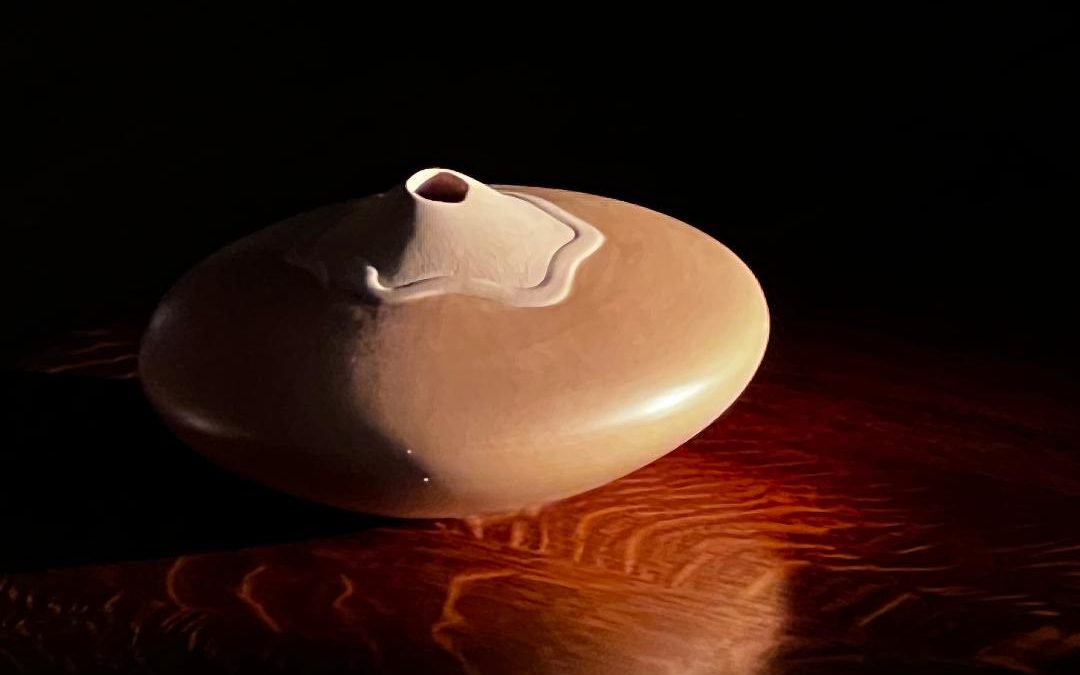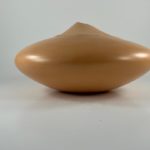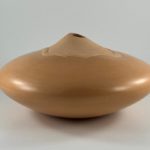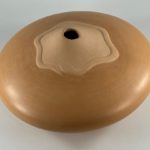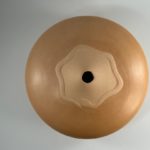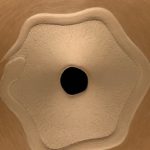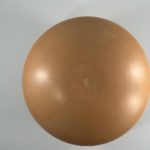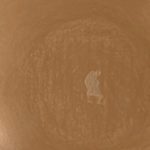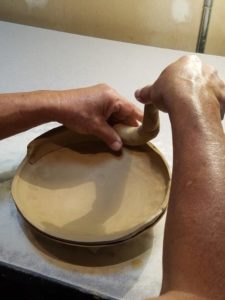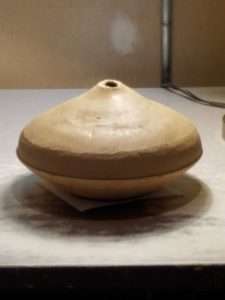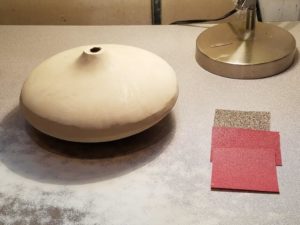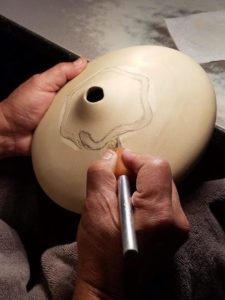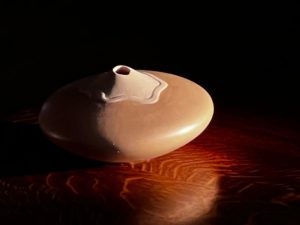
There are pots in this collection that are spectacular because of the complexity of their design (cf 1999-10). Seedjar 2020-19 is spectacular because of its simplicity of form. I also respond to its form because, for me, it recalls Nampeyo, whose name can be translated “snake that does not bite.”
Form:
Preston is Hopi, grew up in Hotevilla on Third Mesa, and uses Hopi clay from his grandmother’s back yard for his pottery. He now lives in Santa Clara Pueblo. As can be seen in these photographs of pot 2020-16 being built, the jar is coil-formed, sanded and then carefully carved before being polished.
- Coiled in Puki
- Rough finished
- Sanded
- Carving
The jar is unslipped, with most of the surface beautifully stone polished to a high sheen, the polishing marks only visible upon close inspection. It was fired in a kiln because, he wrote me, “I don’t want any blushing. I want the color to be unblemished.” From a small 2-inch base, the lower section of the jar flairs outward 4-inches to the waist, then curves 4.625-inches back to an irregular mouth about 0.6875-inches wide. A matte-finish snake 12-inches long undulates six times around the jar’s mouth, the irregular space between it and the opening also carrying a matte finish. From the jar’s mouth to the snake is about 1.82-inches at its widest point.
Design:
In most catalog entries, this is the section where I describe the painted design. Obviously that is not relevant here: on this pot the form is the design.
Meaning:
Of this form, Preston writes:
“This bowl recounts the Hopi prophecy of Gatayo (an angry serpent) that resides below the surface of the world. He is subdued at all times by the two hero twins, the Pooganghoyas, the older of the two controls the head, the younger the tail. If Hopi people should stray away from the teachings of the Creator, he will send a message to his nephews to release the serpent. Gatayo will slowly awaken from his long slumber, and as he gains conscience he will start to violently twist and roll, his thrashing will create vibration upon the surface of the Earth. Thus the punishment sent upon the wicked people will be in the form of violent earthquakes. If the Hopi people remain steadfast to these teachings, the “Earth” will be “in Balance.” The raised line represents the serpent, the wavered rim is the skyline.”
Of his hallmark, seen in the photograph above, Preston writes:
“All of my works are signed with a hallmark which is on the bottom of all my pots. What is depicted is an image of a woman carrying a child on her back and is a translation go my Hopi name Loma-i-quil-va-a, ‘Carried in Beauty,” the name given to me by my Grandmother following my initiation.”
Note that the other Preston Duwyenie pot in this collection (2019-14) was made in the late 1970’s or early 1980’s while he was a student at IAIA. It is simply signed with his last name. The catalog entry for that pot also contains more biographical information about the artist.
Viewers always interact with art and bring their own experience to their understanding. For me pot 2020-19 also recalls Nampeyo. She was born about 1860. “…(W)hen she reached puberty she was given the Tewa name “Sung-beh-yong,” Tewa for Sand Snake [a snake that does not bite]. Outsiders pronounced the name ‘Naha-pay-oh’ and spelled it phonetically in many ways (Kramer, 1996:8).” Other observers have defined other Tewa spellings (Blairs, 1999:58; Wade and Cooke, 2022:20), but all seem to agree on the english translation. When I see this vessel, I am reminded of Nampeyo, “the snake that does not bite,” her genius as an artist, and the pleasure I have experienced getting to know her.

